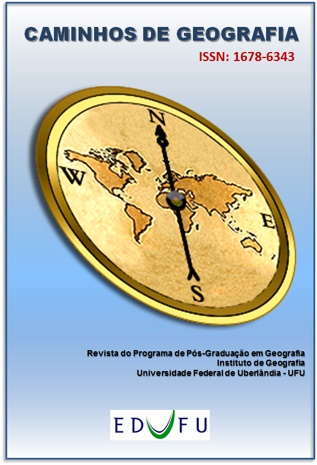IDENTIFICAÇÃO DAS REGIÕES PLUVIOMÉTRICAS HOMOGÊNEAS E INÍCIO E FIM DA ESTAÇÃO CHUVOSA NA BACIA DO MÉDIO SÃO FRANCISCO (BRASIL)
DOI:
https://doi.org/10.14393/RCG228055013Keywords:
Cluster Analysis., Rain., Hydrographic Basin.Abstract
The water scarcity resulting from the poor Spatio-temporal distribution of rain generates great difficulties in water supply for the population of most of the semi-arid northeast and adjacent regions. In this way, knowledge about the rainfall regime of a Hydrographic Basin becomes essential, as a way to monitor droughts, in this case the Middle São Francisco Basin (BMSF) (Brazil). In this work it used daily precipitation data from 22 conventional meteorological stations of the Instituto Nacional de Meteorologia (INMET), located in the BMSF and adjacent areas, from 2001 to 2017. For identification of rain patterns, Cluster analysis via Ward method was used for the discretization of homogeneous groups. Then, the seasonality of the basin was identified, as well as the beginning (IEC) and end (FEC) of rainfall via the Liebmann method. The BMSF rainfall regime was subdivided in to three homogeneous groups (G1, G2, and G3). In addition, these groups presented a similar seasonal pattern of rainfall, the dry season between the May and September months, and the rainy season between October and April months. The IEC and FEC started in mid-October and March, respectively.
Downloads
Downloads
Published
Issue
Section
License
Autores que publicam nesta revista concordam com os seguintes termos: a) Autores mantém os direitos autorais e concedem à revista o direito de primeira publicação, com o trabalho licenciado sob a Creative Commons Atribuição-NãoComercial-SemDerivações 4.0 Internacional. b) Autores têm permissão e são estimulados a publicar e distribuir seu trabalho online (ex.: em repositórios institucionais ou na sua página pessoal), já que isso pode gerar alterações produtivas, bem como aumentar o impacto e a citação do trabalho publicado. c) Em virtude de aparecerem nesta revista de acesso público, os artigos são de uso gratuito, com atribuições próprias, em aplicações educacionais e não-comerciais.










